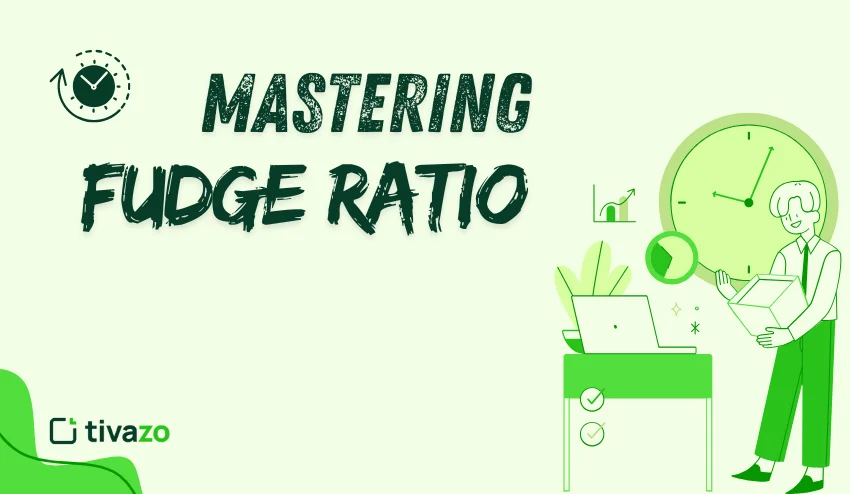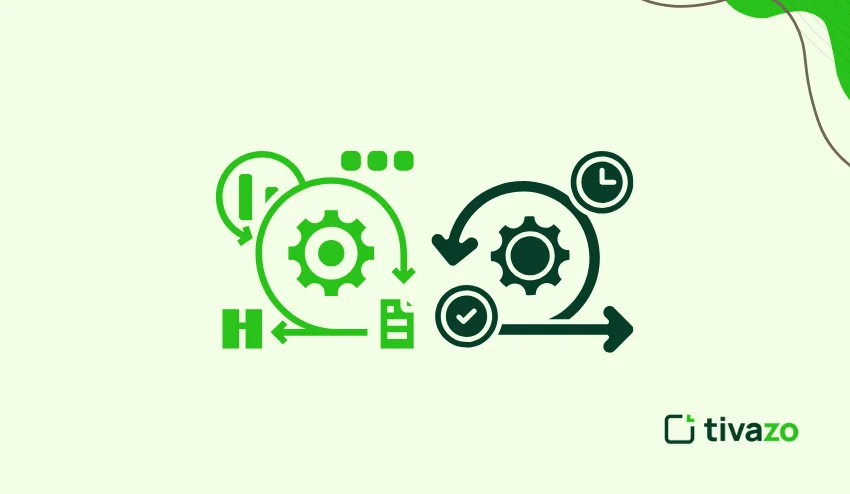Currently, every project manager or project professional has gone through painful moments only for the work to take longer than they envisioned. Deadlines are not met, productivity suffers, and costs can go up (or down!) too. The answer to the riddle is the fudge ratio. By tracking and improving the fudge ratio, crews can better estimate time, improve workflow processes, and stop overpromising.
When estimates are accurate, the project will unfold as planned, crew members will be less stressed, and clients will be facilitated when everything is delivered on time. The fudge ratio provides transparency to learn what went wrong in the planning process, and create a way will correct it. With tools help (like Tivazo), they can track actual performance and not only compare their actual results to their estimates (of course), but also consistently reduce the way we forecast, which just seeds a sense of responsibility, accuracy, and confidence to manage future projects.
What is the fudge ratio?
The fudge ratio is an uncomplicated measurement to show the difference between the estimated time and the time actually spent on tasks.
Formula
Fudge Ratio = Estimated Time/ Actual Time
For example, if you think the task will take you 4 hours, and it actually takes 6 hours, your fudge ratio is 0.66. If you estimate the task will take you 6 hours, and you finish in 4, your fudge ratio is 1.5.
In summary, a fudge ratio of 1.0 is ideal, meaning your estimate matches the actual time.
What is a Fudge Ratio
Value of a Fudge Ratio
The fudge ratio allows individuals and teams to recognize when they are either underestimating or overestimating the time needed to complete their work. Tracking this serially allows for improved forecasting, productivity, and accountability.
Key points of value
- Better optimizations around deadlines
- Improved client relationships
- Lower costs to deliver projects
- Improved productivity across teams
To put it simply, accurate estimating is the foundation of effective project management. Once a team is aware of its, the team can rely on actual data, rather than guesswork or thoughtlessly optimistic assumptions, that influence how much time work will take. This allows the manager to set realistic deadlines, effectively assign resources, and avoid inevitable panic in the final hour of a project or task.
For professionals, a good fudge ratio provides for ethical billing and transparency with clients. For organizations, it positions you as credible through meeting cost and timing expectations. Furthermore, tracking your fudge ratio over time reveals trends, e.g., where estimating is constantly underestimated in a particular category of work, which can be resolved through training or tools. Ultimately, the fudge ratio is about building a workplace culture that values accuracy, trust, and improvement on an ongoing basis.
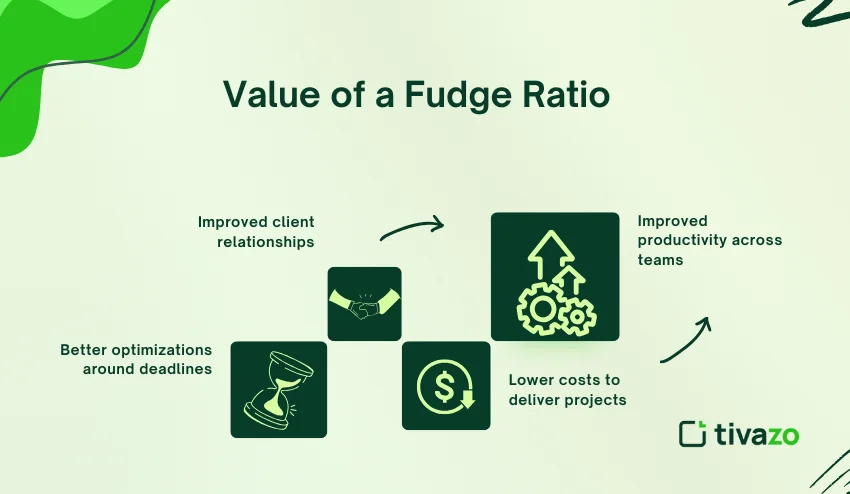
The Fudge Ratio in Time Tracking and Project Management
What Happens When Teams Underestimate Time, Again and Again?
- Deadlines slip, and clients are unhappy.
- Employees become overworked and burned out.
- Budgets get out of control.
- Project efficiency declines significantly.
- The Value of Accurate Time Tracking as the Foundation of a Healthy Fudge Ratio
To understand and calculate the fudge ratio, you need accurate time tracking. Relying on memory and estimating time is an unreliable way to gather knowledge. Tools like Tivazo remove guesswork by verifying actual hours spent, which helps teams move closer to reality.
As teams inevitably engage in fudge ratio tracking, the patterns will reveal where miscalculations and estimating time processes are occurring, which can lead to improved processes based on the data. When employees know their time is accurately tracked, they feel accountable, and estimating time for projects becomes more reliable. The fudge ratio informs you of efficiency, but the fudge ratio also reveals where to apply the effort to improve the administrative workflow. When companies focus on improving the fudge ratio, over time, they will have more knowledge of resource control, an understanding of unnecessary costs they are wasting, and deliver projects with more confidence and accuracy.
Utilizing the Fudge Ratio in a Work Environment
How to Enhance Your Fudge Ratio:
A step-by-step guide
- Keep accurate records of tasks – Use the appropriate software like Tivazo.
- Determine fudge ratio regularly – Weekly or monthly.
- Look for patterns – Which tasks are underestimated most often?
- Adjust future estimates – Add buffer time in instances where you are often underestimating.
- Review team reports – This helps understand trends.
- Provide training – Employees can work on their areas of opportunity in estimating.
- Monitor on dashboards – Keeping it real-time monitoring.
- Promote transparency – Establish a culture of communicating misestimates.
- Benchmark programs – Measure a better fudge ratio of projects today versus the same project in the past.
- Do this again and again – it is the refinement for accuracy that becomes more exact.
Improving your fudge ratio is not a one-time activity; it is a continual process refined through every project. Teams that measure and review their fudge ratio regularly benefit from this. As an example, if one department is always underestimating time, a manager could offer some training or add resources. If they consistently underestimate time, teams have the opportunity to rework their calendar to save some time. Once this process is integrated into the work culture, organizations develop a data-savvy culture where information is based on actual performance, versus relying on assumptions. After a while, this allows organizations to resolve wasted effort or productivity while still delivering a project on time and on budget.
The Fudge Ratio Formula: Why Professionals Have Trouble
| Estimated Time | Actual Time | Fudge Ratio | Result Meaning |
| 8 hrs | 10 hrs | 0.8 | Underestimate– the task took longer |
| 10 hrs | 8 hrs | 1.25 | Overestimate – task finished early |
| 6 hrs | 6 hrs | 1.0 | Perfect estimate |
Why Do People Struggle
- Optimism bias: believing tasks will take less time.
- No record of data.
- Forgetting about distractions and meetings.
- Tracking software is not adequate.
The fudge ratio seems simple, but many professionals and teams have trouble continuously estimating accurately. A common issue is using “best-case scenarios” for estimating how long it will take to complete a task. For example, an employee thinks they can complete a task in four hours. In reality, that same employee had to deal with interruptions from urgent emails, meetings, and a short technical problem. If the person does not estimate that into their plan, the fudge ratio ends up below 1.0, which goes to show the employee underestimated the task time.
Another reason is the absence of data. If a team does not keep a record of their past time, then the team is missing a point of reference when they are estimating time in the future. This is where tools come in, like Tivazo. Any time an employee spends on a task can be recorded by Tivazo, creating an entire library of factual data that takes the guesswork away from planning.
Over time, the fudge ratio starts to get better as estimates are measured against the real-life time that each team member is consistently using. Professionals can avoid the often-obvious pitfalls by using estimates, building realistic schedules, and building more trust with clients.
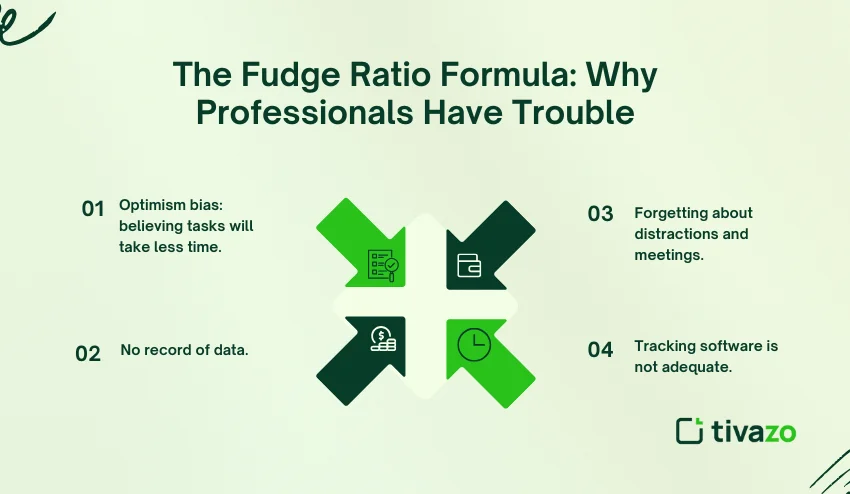
Data-Driven Tracking: How It Enhances Project Planning
By reviewing fudge ratios across projects, managers can:
- Anticipate accurate delivery dates.
- Set realistic expectations with clients.
- Allocate resources appropriately.
- Maximize profitability.
Using data-driven tracking means teams do not have to perform guesswork; rather, they will be able to plan and resource projects with reference to historical data. When managers are diligent about monitoring fudge ratios, they develop a developing understanding of which projects or tasks are likely to be underestimated or overestimated. Managers can then proactively alter timelines to accommodate realistic expectations.
Furthermore, reviewing also helps with appropriately allocating resources. If one team, for example, continually underestimates the complexity of tasks, the manager can change the less experienced team member to a more experienced team member, and/or reduce the team’s workload. Data you have accurately tracked estimates over time, will help track finances as well. Managers will know exactly how much time a task will take, which means a company can most likely avoid overruns and increase profitability.
Ultimately, a team, and subsequently the firm, learns to plan with fudge ratios for some period of time is developing an accountability and accuracy culture. Teams will become more efficient, clients will trust delivery dates, and projects will continue to provide a qualified result without any stress or delay.
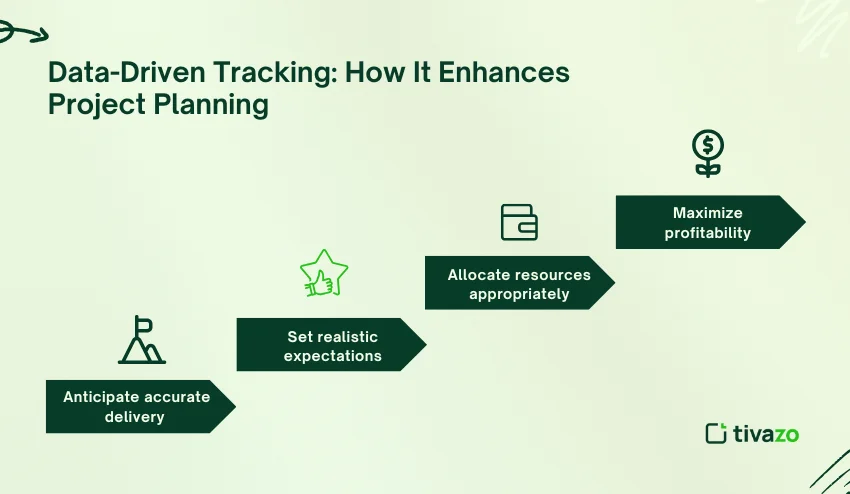
Tivazo’s Tracking of Real-Time Spent on Work
Tivazo offers automated time tracking that captures the real time spent on projects, without the need for manual input or causing any errors; it just provides data. This guarantees that every minute spent working on a task is recorded, providing managers with an actual view of team productivity and distribution of work.
Reports Provided by Tivazo: Rate and Tracking the Fudge Ratio
With great reporting, Tivazo can show you the fudge ratio you have across teams and tasks. A manager can easily see where estimates were consistently less than or more than the real time needed to finish the job, so he/she can take action in time.
Tivazo Features that Improve Mastering Time Estimates
- Real-time tracking dashboards
- Reporting with actual work tracking to report task-level data
- Reporting that compares historical efforts with more current projects
- Artificial intelligence data that provides data for smarter time estimates in the future
Using Tivazo for Reviewing Projects that are Completed Normally
With the study of past performance time using Tivazo, teams will have true comparisons of future efforts vs past knowledge, and make estimates more thoughtful. By using the data that Tivazo provides, teams will have useful real-time tracking towards improving error rates in future planning and ultimately performance. The feedback loops and change will lead to better control of the fudge ratio, so naturally, over time, outcomes will become more predictable, improving resources and capacity.
Why Knowing the Fudge Ratio Matters to Professionals and Organizations
- Freelancers do not underbill their clients.
- Project managers do not let budgets exceed approved spending.
- Businesses create more trust with clients.
- Teams increase their capacity by planning better.
In short, knowing the fudge ratio increases accuracy, trust, and profit. In addition to these immediate benefits, mastering the builds a culture of accountability amongst teams. When teams know their time estimates influence project success, they take time planning and time estimation more seriously. Businesses can identify bottlenecks in workflows, streamline processes, and assign work more effectively. Eventually, time estimates become routine and consistent, alleviating stress and preventing last-second disasters.
Over time, the more accurate the team’s time estimates become, leading to fewer conflicts and higher team morale. When professionals and organizations learn how to improve the fudge ratio, they are not just measuring a technical metric; they are improving evidence of sustainable growth, greater client partnerships, and a more efficient organization.
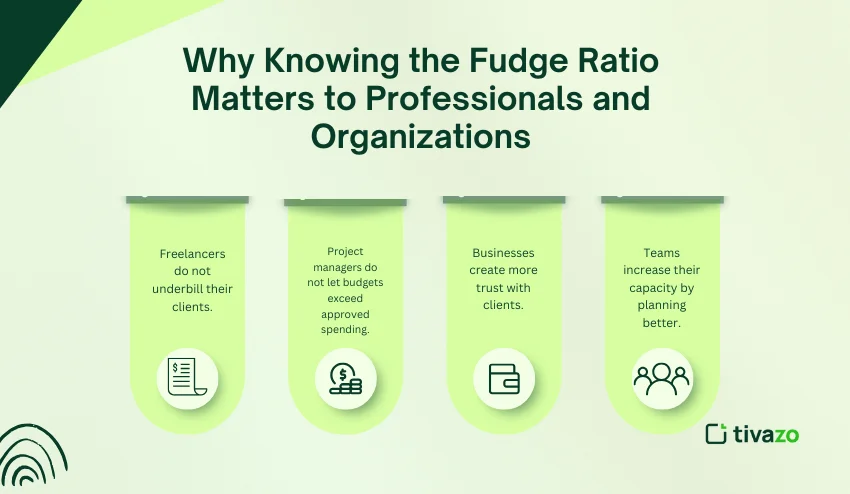
Conclusion
The fudge ratio is a vital consideration when estimating a task’s duration, and when the amount of actual time spent is different. If teams or professionals analyze and monitor the fudge ratio, they will become more accurate at estimating time, as well as improving productivity and on-time delivery of all projects.
Issues like optimism bias, lack of historical data, and poor tracking may all reduce the reliability of estimates. Tools like Tivazo help simplify tracking actual time, generate full reports, and create dashboards and AI-powered insights to understand the fudge ratio, and/or improve it. Learning to understand and improve the fudge ratio is helpful for freelancers billing accurately, project managers preventing cost overruns, and businesses building trust with clients. All in all, being mindful of continually improving the fudge ratio will promote efficiency, accountability, and more favorable project planning for all teams.
